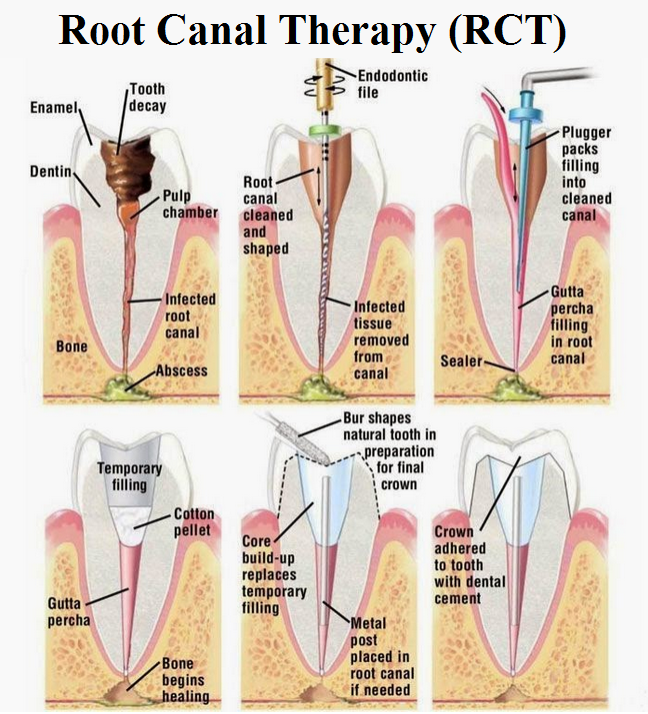Every year, there are millions of people who require endodontic treatment, or a root canal, in order to treat or save the respective damaged tooth or teeth. A root canal not only eliminates one’s tooth pain but also protects your exclusive smile. Root canals help patients chew effectively and bite normally.

Way of Working
Endodontic treatment cures the infected or inflamed pulp inside a person’s tooth. The pulp becomes infected or inflamed when there is deep tooth decay, crowns become faulty or there is a chip or crack in one’s tooth. So, this type of dental procedure occurs often. Sometimes, severe trauma also results in pulp damage. If the injured pulp is not treated on time, then it leads to severe pain, or it can lead to an abscess.
A root canal basically removes the damaged pulp from the affected tooth properly and cautiously sterilizes and cleans the area. After this, gutta-percha, a rubber type substance, is filled inside the tooth to seal it. Subsequently, a filling or crown is used for the restoration and protection of that tooth. After this, the treated tooth starts functioning normally.
The Procedure
- Anesthesia is injected into the damaged tooth of a patient along with the tissues surrounding it to numb the area for treatment.
- An effective dental dam made of vinyl or rubber is placed over the damaged tooth as well as the adjacent one so the affected tooth can be isolated and treated properly. There is a hole perforated in a particular area of the dam, and then the damaged tooth sticks out for the treatment.
- A small hole is drilled from one side of the damaged back tooth through the biting surface. This provides the dentist with access to the inside of the tooth where the root canals and pulp chamber are present.
- After gaining access, the dentist uses special tools to get rid of the contaminated and lifeless pulp from the damaged tooth, and cleans it thoroughly.
- Next, the dental professional will use antibacterial and antiseptic solutions for the sterilization of the root canals.
- After this, the canals are filled with stuffing and sealers and are washed meticulously for the removal of any debris present inside them.
- The access hole is sealed with the help of a permanent or temporary filling, and the dentist removes the vinyl or rubber-made dental dam.
- After the procedure, Antibiotics are prescribed by the dentist for the prevention or treatment of infection.
- You will also have to get a perpetual restoration for regaining your tooth structure and seal the top.
Lifespan of the Repaired Tooth
Once you take proper care of your restored tooth, it will last for a lifetime. There are many treatments for tooth decay, so It’s important to talk to your doctor about your options. You should also maintain excellent dental hygiene to prevent any dental problems.
Keep in mind that since the diseased pulp gets removed from the damaged tooth, it’s practically lifeless and there are very high chances of it becoming brittle and susceptible to fracture. So, you should take this factor into account whenever you are considering whether you should get a filling or crown for your treated tooth.
There are various professional clinics like Josey Lane dentistry that can determine the failure of success of an endodontic treatment with the help of x-rays. They know what should be done in this kind of treatment and use their advanced residency skills to diagnose and manage diseased tooth.

